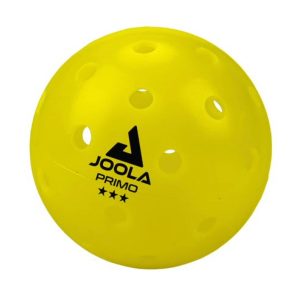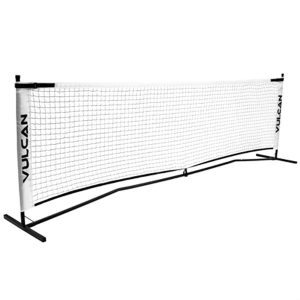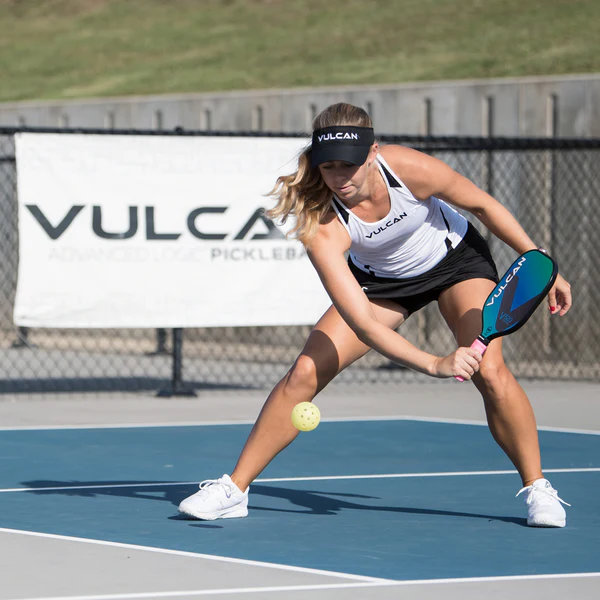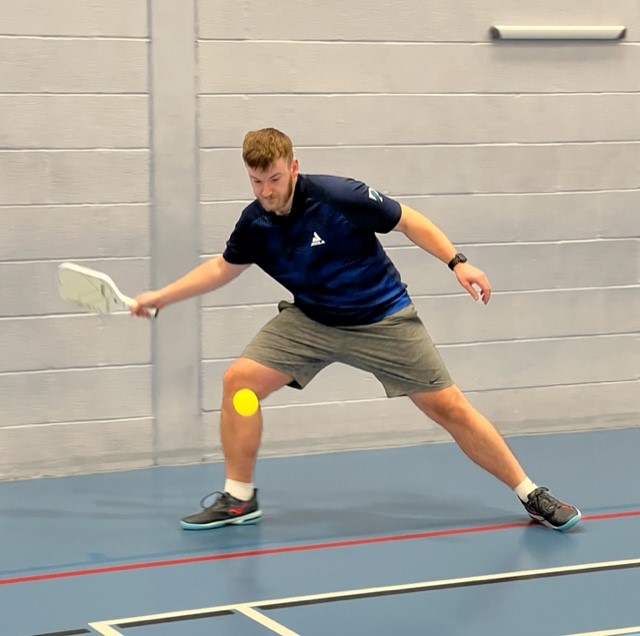Overview
- Pickleball can be played as either doubles (two players per team) or singles; doubles is most commonly played.
- The playing area and rules are the same for both doubles and singles.
- The court size is the same as a badminton court, except the volley line (7ft from net) is slightly different compared to the badminton short service line (6.5ft from net).
- Pickleball can be played both indoors and outdoors (different types of balls may be used).
The Serve
- The service must be underarm (arm must be moving in an upwards motion when striking the ball).
- The contact with the ball must not be made above the waist.
- At the time the ball is struck, the server’s feet may not touch the court or outside the imaginary extension of the side-line or centreline and at least one foot must be behind the baseline on the playing surface or the ground behind the baseline.
- The serve must be made diagonally and land within the confines of the opposite diagonal court (clear the non-volley zone line).
- Only one service attempt allowed per server (no second serves).
Serving Sequence
Doubles
- At the start of the doubles game, the service pairing will only get one serve until they lose a point, the serve is then passed to the receiving pair.
- The first serve of the pairing is always played from the right side of the court.
- After the first server has served and faulted, both players on each side will get the opportunity to serve and score points until they commit a fault (lose the point).
- If the serving pair wins the point, the server switches sides and the server initiates the next serve from the left of the court.
- As subsequent points are scored, the server continues switching back and forth (right and left) until a fault is committed and the first server loses the serve.
- The second server then continues to serve until a fault is committed by the serving team and then the serve is lost to the opposing team.
Singles
- The server starts serving (still diagonally) from the right side of the court (odd number) and then alternates depending on how many points they have scored. (left for even, right for odd)
Scoring
- Points can only be scored by the serving team; you cannot win the point as a receiver (you can only win the serve)
- Games are normally played to 11 points, win by 2 clear points.
- In some competitions, games may be played up to 15 or 21, still winning by 2 clear points.
Two-Bounce Rule
- The two bounces needed in every point is the first two shots, the serve must bounce and the receive of serve must also bounce.
- After the ball has bounced in each team’s court (two bounces), both teams can either volley the ball or play the shot off a bounce (your choice).
- The two-bounce rule eliminates the serve and volley advantage, which is to extend the length of the rallies.
The Kitchen (non-volley zone)
- The non-volley zone is the area of the court closest to the net.
- The size of this area is 7 feet from the net across the court.
- Volleying is prohibited in this area to prevent players from standing at the net and executing smashes (most would be unreturnable/lengthen rallies).
- If a player executes a volley in the non-volley zone, the point automatically goes to the opposition. This includes standing on the volley line when volleying and/or when a players momentum causes them or anything they are wearing/carrying to touch the non-volley zone.
- A player may legally be in the non-volley zone to play shots which have bounced first.
Court Lines (Line Outs)
- A ball contacting any part of any line, except the non-volley zone line on a serve, is considered ‘in’.
- A serve contacting the non-volley zone line is short and classed as a fault.
Faults
- A fault is any action that stops play because of a rule violation.
- A fault by the receiving team results in a point for the serving team.
- A fault by the serving team results in the server’s loss of serve or side out.
Who Serves First?
- Any fair method can be used to determine which player/team has the choice of side, service or receive, this could be a simple coin toss.












